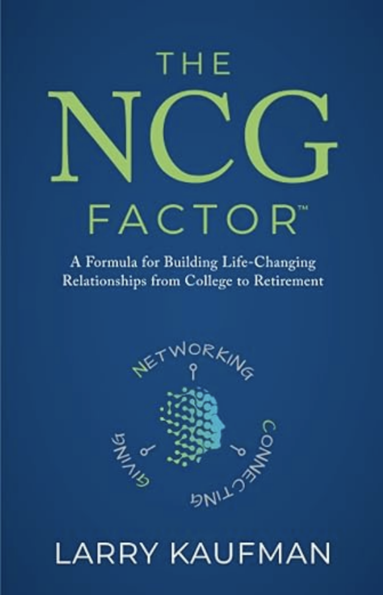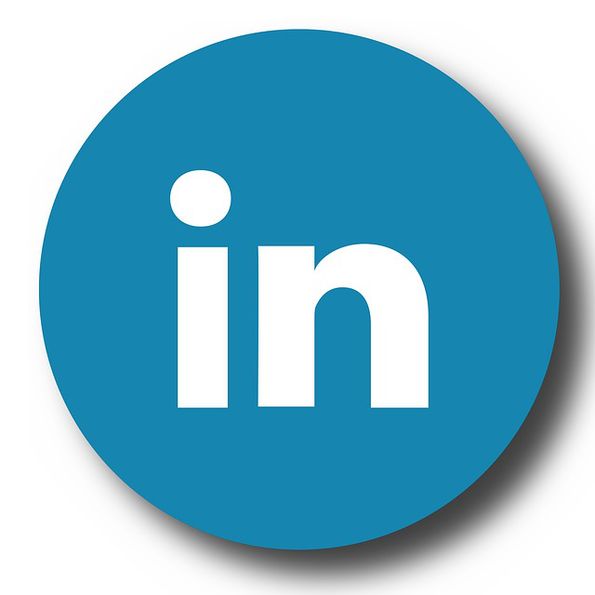|
Have you discovered in your professional or personal life—some folks are givers, others—takers. Some are selfless, others—selfish. It’s likely, their preferred “pronouns” aren’t he/she/they, but instead, me/my/ mine! Their favorite word is “I” and their focus is always themselves.
Here’s the great news—you’ll soon discover, Larry Kaufman ain’t one of ‘em! He’s a gracious giver. Plus, his networking knowledge and ability to help you leverage LinkedIn is legendary. Not only for his success, but especially—for those who are connected to him.
I know, I’ve been the fortunate beneficiary of Larry’s insights, connections and friendship. And now, you too will reap the rewards.
Larry and I were introduced by a mutual friend, Kevin Kinsella. He had a hunch, Larry and I would hit-it-off. Boy, was he right! (Thanks again Kevin.)
Larry’s introductions, have led to business and opportunities for me. And my introductions, have led to business and opportunities for him.
Larry’s full-time gig is the Regional Managing Director, Midwest Region for Jefferson Wells—a professional services firm delivering solutions in Finance & Accounting, Internal Audit, Risk & Compliance and Tax. (Jefferson Wells is part of the ManpowerGroup of companies.)
Plus, Larry is a talented speaker, bestselling author and an expert on how to strategically network and best use LinkedIn. Here are edited highlights, from our many conversations...
Jeff Blackman: With your bestselling book, The NCG Factor, NCG stands for Networking • Connecting • Giving. With most folks, the “G” would be “Growing” or “Getting”—yet you call yourself: a connector, rainmaker and giver—who lives his life to help others succeed. So why is “Giving” such a crucial success-driver and how do you execute it? 
Larry Kaufman: Giving isn’t about you, it’s about another person or a cause—something that’ll help someone other than yourself. Yet, giving does help you in the process.
You know you’re doing something for the greater good. Giving can be financial, like donating to a charity. Or it could be sharing your knowledge and expertise. You can be an informal or formal mentor, tutor, or coach. Giving is easy to execute, when you devote time and effort to learn about another person and what’s important to them.
JB: What key strategies will help someone network for a lifetime of success?
LK: Do research. Be prepared, before you meet or chat with someone, review their LinkedIn profile. Look for shared connections. Create great questions based upon your research. Be sure to ask, “How can I help you?” Listen. Then, be ready to connect people for the right reasons.
JB: How does one use their LinkedIn network and connections, to be of the greatest help and value to others?
LK: You need connectors. If you have network contacts who aren’t comfortable making introductions, then you’ll be challenged to help others. You need a solid 500 to 1,000 connections—people you know at varied levels, in diverse industries, roles and geographies. Plus, when you devote 30 to 60 minutes daily to LinkedIn, it’ll remind you to reconnect with your network, reach out for birthdays, anniversaries, job changes and promotions.
JB: You have 30,000 LinkedIn connections—how the heck—do you manage them?
LK: I don’t really manage them, I leverage them. The global expertise in my network has repeatedly proven to be helpful to me. But more important, incredibly valuable to my network. That’s why having connections to very connected connectors—enables you to enthusiastically embrace and successfully live, work and execute the NCG way of life!
JB: What’s the best way to position yourself, to help others? Especially, if you’re not sure you can help them.
LK: Great question. Many don’t even ask, “How can I help you?” That’s the best, easiest way to help others—just ask! Plus, the more you ask, learn and listen—the more you learn how to help that person, or how they can help someone else.
JB: You promote the strategy of being “indispensable” — how does one do that, internally within their company and externally with others in their network?
LK: To be indispensable internally, let your company’s leadership, peers and teams— understand they must think of you as an indispensable internal colleague or resource. And when a need surfaces personally or professionally for them, you should have already pre-positioned, “Just ask me for help.” When you have a vast and great network, that helps you meet the needs of that “ask”.
This strategy also works externally. I let others know I’d like to be seen and leveraged as an indispensable relationship in their inner circle. If you’re not networked, but have connections to connectors, like me or you Jeff—we’ll help you become indispensable!
JB: Larry, in The NCG Factor, you share an intriguing suggestion:
“...when you have a 1:1 networking meeting—have a specific plan—which includes—encouraging the person you’re meeting with—to go through your contacts and create a list of 5 to 10 people from your network that might be able to help them in some way.”
And you do the same with their connections. How do you position this?
LK: You need a plan or goal for each 1:1 networking meeting. Know what you want to achieve. It may not be for contact-sharing and introductions, it could simply be to catch-up. Yet the 5 to 10 approach encourages both of you to open your LinkedIn networks to a search for meaningful introductions. You took the time to review and filter their connections and narrowed your target list to 5 to 10.
To easily position this strategy, say something like, “In preparation for our meeting, please filter my LinkedIn network and select 5 to 10 people you’d like to know. And if it’s okay with you, can I do the same with your network?”
 JB: How do you best leverage LinkedIn as a lead-generator? JB: How do you best leverage LinkedIn as a lead-generator?
LK: You need to be specific. I might select a one-off introduction request to my network. If a CEO-of-interest is 2nd degree to me and we share 10 connections I know very well, I’ll then ask two to three of those shared connections how well they know the CEO. I’ll then select the 1st degree connection with the best relationship/response—to please introduce me with an introduction written in the third-person. The NCG Factor provides a template to do this.
JB: Tell us more about this descriptive paragraph, so it’s easy for others to introduce you...
LK: Creating your own introduction in the third person, removes the “introduction creation” burden from your introducer. Plus, I don’t want to relinquish creative control, when there’s someone I’d like to meet. And it’s easier on the introducer. All they need to do, is copy/paste/send my introduction. For them, it’s quick, easy, efficient!
JB: What are your LinkedIn best-practices tips?
LK: Here are five:
1. Don’t use only your title—for your headline next to your name. Be creative, use title variations like COO / Chief Operating Officer, and add something interesting about yourself, like Keynote Speaker or 3rd Degree Blackbelt in Karate.
2. Include an ABOUT section and use keywords that really define your skills, background, company’s focus, plus unique facts or experiences about you.
3. Show a professional photo of yourself, a special background image, or proud achievements.
4. Capitalize your FIRST and LAST NAME: Optional, but it helps to highlight your profile when you’re found in a search with others who have similar expertise.
5. Throughout your profile, include keywords related to you or your company’s expertise—that others would use to find someone with your experience. Repetition helps others find you.
For more of Larry’s giving and winning ways, you’ll find The NCG Factor at Amazon.
• • • • •
Want to see how Jeff Blackman helped one client drive results? Please take a peek at this video, where Chris Randall, CEO of Ultra Risk Advisors, talks about Jeff's positive and powerful impact on his team:
To explore how Jeff can help you and your team drive results—with speaking, training, coaching, consulting and ongoing reinforcment—in-person or virtual, please contact Sheryl Kantor at: [email protected] or 847.998.0688
|